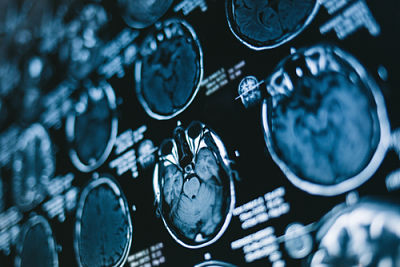Imaging Services at Concho County Hospital

Radiology Scan showing brain X-RAYS.
Call us at 325-869-5911
CH Radiology Staff:
All of our Radiographic Technologists are registered by the American Registry of Radiologic Technologists and licensed through the Texas Medical Board.Radiology Department Hours:
24/7 for all ER's and Inpatients8am- 5pm Monday-Friday excluding Holidays for Outpatients.
Fast. Accurate. Local.
When you need answers, timing matters. At Concho County Hospital, our imaging team provides fast, high-quality scans so you and your doctor can move forward with care — all without long wait times or long drives. Concho County Hospital provides diagnostic imaging services to inpatients, outpatients and emergency room patients. Your imaging team includes physicians, radiologists, technologists, registered nurses and support staff, working together to support prompt and accurate diagnosis and treatment.
The Radiology/Imaging Services Department at Concho County Hospital is organized into two major components: Diagnostic Radiology (X-ray) and CT (Computed Tomography).
CT Scans, Right Here in Eden
We use a 64-slice CT scanner to perform a wide range of imaging studies — including advanced scans of your blood vessels, lungs, and internal organs.
CTA Chest / Abdomen / Pelvis
A CTA (CT Angiography) is a special type of scan that shows clear images of your arteries and veins. It helps doctors:
This type of scan is often used when timing and accuracy are critical.
Low-Dose Chest CT for Lung Cancer Screening
Early detection saves lives. This scan is designed to find signs of lung cancer before symptoms appear — when it’s most treatable.
Recommended for:
Why it matters:
Ask your provider if this screening is right for you.
Expert Technologists. Quick Results. Local Convenience.
All of our imaging technologists are certified by the American Registry of Radiologic Technologists (ARRT) and trained to help you feel comfortable and confident during your scan.
Unlike larger facilities, we offer faster appointments and quick results — so you can get back to life with less stress and delay.
Need to schedule an appointment or ask questions?
Call us at 325-869-5911 — we’re happy to help.
Learn More About Diagnostic Testing and Local Care
Low-Dose Chest CT for Lung Cancer Screening
Early detection saves lives. Find out who qualifies for low-dose CT and why it matters for lung cancer prevention.
Staying Healthy, Staying Local
See how local labs and imaging make it easier to manage your health — with the support of your family nearby.
Sick Kid? Get Answers Fast — Without Leaving Eden
Quick testing and imaging for kids, right here in town. Less driving, more peace of mind.
